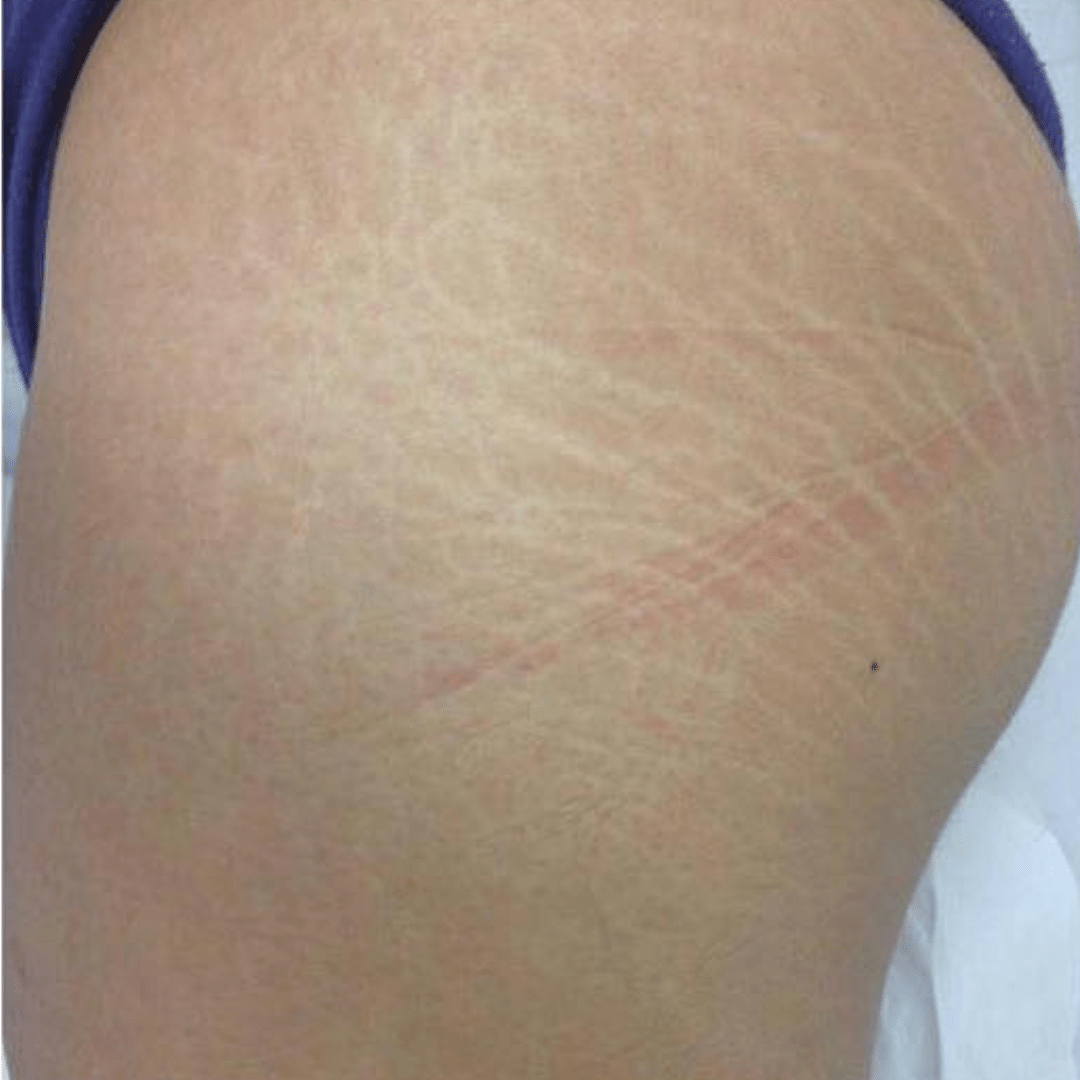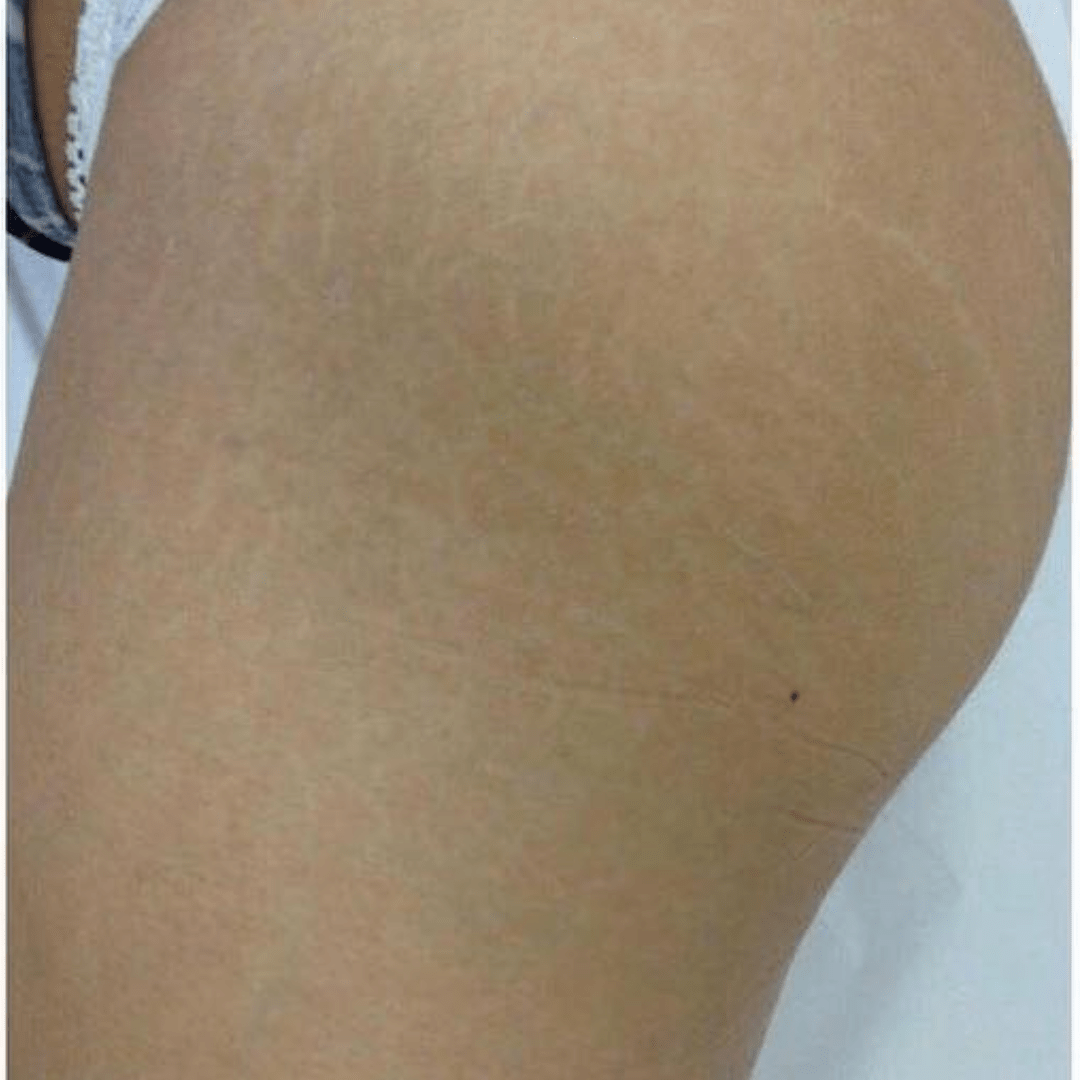
Stretch mark removal treatment
Stretch marks, also known as striae, are long, narrow, and streak-like marks that appear on the skin’s surface. They are usually a different color or texture than the surrounding skin and can appear red, pink, purple, brown, or silver.
Stretch marks occur when the skin is stretched too quickly, causing the collagen and elastin fibers to break down. This can happen during puberty, pregnancy, rapid weight gain, or as a result of certain medical conditions or treatments, such as Cushing’s syndrome or long-term use of corticosteroids.
Stretch marks most commonly appear on the abdomen, thighs, hips, breasts, and buttocks, but they can occur anywhere on the body. While they are not harmful or painful, many people find them unsightly or embarrassing.


How Stretch mark removal treatment is done?
Stretch mark removal treatments typically involve various techniques that help to reduce the appearance of stretch marks on the skin. Some of the most common methods include:
- Topical creams and lotions: There are several topical creams and lotions available in the market that can help to reduce the appearance of stretch marks. These creams and lotions contain ingredients like retinol, hyaluronic acid, and vitamin C, which can help to improve the texture and tone of the skin.
- Laser therapy: Laser therapy is another popular stretch mark removal treatment that involves the use of a laser to target the affected areas of the skin. The laser helps to stimulate the production of collagen and elastin, which can help to improve the texture and elasticity of the skin.
- Microdermabrasion: Microdermabrasion is a non-invasive treatment that involves the use of a special device to exfoliate the top layer of the skin. This can help to reduce the appearance of stretch marks and improve the overall texture of the skin.
- Chemical peels: Chemical peels involve the application of a chemical solution to the skin, which helps to remove the top layer of dead skin cells. This can help to reduce the appearance of stretch marks and improve the texture of the skin.
- Surgery: In some cases, surgery may be recommended to remove stretch marks. This typically involves the removal of the affected skin through a process called abdominoplasty or a “tummy tuck.” However, surgery is generally only recommended for severe cases of stretch marks and should only be considered as a last resort.
- It is important to note that while these treatments can help to reduce the appearance of stretch marks, they may not completely remove them. Additionally, the effectiveness of these treatments can vary depending on the severity of the stretch marks and other individual factors. It is best to consult with a dermatologist or healthcare professional to determine the most appropriate treatment options for your specific needs.
